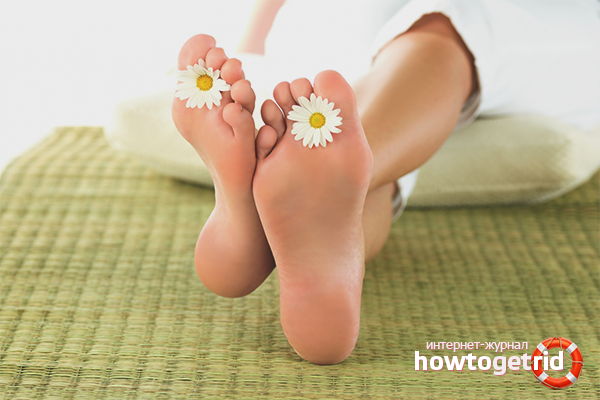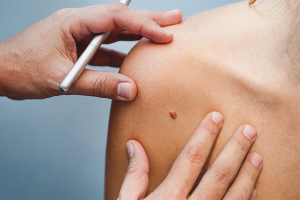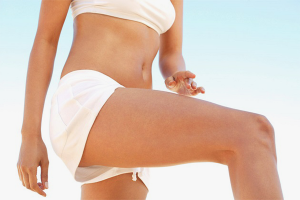The content of the article
Corns are painful formations on the feet or toes. Consist of particles of dead skin. They arise due to uncomfortable shoes, diabetes, increased physical exertion, excess weight and improper gait. Seals can remain on the feet for months or years, causing discomfort. Formations from dead skin are cleaned with natural acids and moisturizing folk remedies.
Soda, salt and dairy products
Feet must be steamed before removing corns. Prepare warm solutions from improvised components:
- sea or cosmetic salt;
- baking soda;
- laundry soap;
- iodine.
The keratinized areas are softened with baths with ethyl or ammonia. They consist of 2-3 art. l salt, a pinch of grated soap, 1 liter of warm water and 30 ml of alcohol. Sometimes 20 g of baking soda is added to water.
Education will disappear faster if laundry soap is applied to the feet and fingers, rather than dissolved in water. They remove corns and unpleasant odors with essential oils: pink and lavender goes well with soda, and tea tree with cosmetic salt.
Large coarsened areas soften with sour milk, whey or yogurt. In a bowl, 2 L of the drink is heated, then 25 g of soda, 30 ml of ammonia and 60 g of shavings from laundry soap are added to the product. The second version of the bath from corns is prepared from whey, which is mixed with glycerin and castor oil. The components are combined in a separate container, take approximately 20-30 ml of the first and second ingredient. Then, with a thin stream, the product is poured into warm yogurt or whey.
Manganese, vinegar and peroxide
If tortured not only corns, but also an unpleasant odor, the feet soar in antiseptic solutions. One of the most popular is peroxide. The disinfectant corrodes dead skin, makes it smooth and removes seals. 50 ml of peroxide are dissolved in a liter of heated water. Feet are immersed in an antiseptic bath for 30 minutes.
Antibacterial and softening solution is prepared from potassium permanganate. 2-3 liters of water and several powder crystals are mixed in a bowl. Feet soar in a light pink liquid, to which 30-40 g of sea or iodized salt is added.
Seals from dead skin after steaming are ground with a pumice stone. No corns should be rubbed hard so as not to injure. In cracks and small wounds get infections that lead to inflammation and suppuration of education. Instead of pumice, use a nail file. But it is sterilized after each procedure, and then discarded. Hand nails cannot be handled with such a tool.
The keratinized areas are burned out with apple cider vinegar. After the bath and pumice, a piece of black or white bread is applied to the seal. The workpiece is impregnated with undiluted vinegar. Sandwiches are replaced with thin slices of lemon. Citrus contains acids that corrode dead skin and dissolve corns. A piece of bread or fruit is wrapped around the foot with cling film. Put a tight bandage from an elastic bandage on top, put on cotton or wool socks over the structure so that the acid is better absorbed.
Formations after apple cider vinegar disappear on the 7-8th day. The main thing is to regularly carry out the procedure, and before the compress, soar your feet in saline or peroxide. If it’s a pity to spend lemon on the fight against a cosmetic defect, you can replace the flesh with a piece of fresh skin.
Apple cider vinegar is also mixed with onion gruel.The components insist for about an hour, then apply a thin layer to the problem areas. Cover the mask with a bandage or cling film. The workpiece will work more efficiently if the patient puts on woolen socks and leaves an onion compress for the whole night.
Banana, oatmeal and potatoes
The corns that have appeared recently are cleaned with oatmeal. The flakes are brewed with boiling water, and after softening, they are distributed between the gauze segments. The mucous slurry is applied in a thin layer and applied to the steamed foot. Wrap up with a bag, cotton and woolen sock. Oatmeal is applied for 4-5 hours. After washing, a moisturizer is rubbed into the keratinized area.
Softens and sanitizes corns from raw potatoes. The peeled vegetable is rubbed on a fine grater; 3-4 drops of glycerin, castor oil or any essential oil can be added to the preparation. Such a mask will remove even coarsened formations. Mashed potatoes are applied to the skin or a piece of gauze. Bandage, close the foot with a plastic bag and leave a compress for 6-8 hours.
A cosmetic defect removes a banana peel or pulp. A yellow fruit compress is applied to the softened skin before bedtime. Bandage the blank, put on warm socks, and in the morning wash off the banana particles with warm water. After the procedure, use a moisturizer, you can make your own.
Herbal recipes
Patients with sensitive skin are recommended to replace the baths of peroxide and laundry soap with warm decoctions. Antiseptic and anti-inflammatory properties:
- chamomile;
- thyme;
- calendula inflorescences;
- peppermint;
- thuja;
- St. John's wort
Plants relieve inflammation, soften corns and facilitate their removal. Healing baths are prepared from one or more components. A mixture of two to three herbs has a stronger antibacterial and anti-inflammatory effect. The composition, in which calendula is present, removes not only coarsened formations, but also small cracks on the heels and between the toes.
Unpleasant odor and corns eliminate the bath from the branches of the needles. You can make an infusion of chamomile or thyme, and then add 3-4 drops of essential oil of pine or cedar, juniper or peppermint to the water.
Seals disappear if daily applied to the problem areas poultice from meadow geranium. The stems and leaves of the medicinal plant are finely chopped, mixed with a small amount of boiling water. After 5 minutes, the excess liquid is drained, and the green mass is transferred to a gauze bag. A geranium compress is wound around the foot with cling film. Put on warm socks and go to bed.
Coarse cosmetic defects are removed with celandine juice. Several branches of a fresh plant are crushed in a blender or with a meat grinder. Pour into gauze and squeeze the cake. Freshly squeezed celandine juice is quite concentrated and dangerous. It can leave deep burns on the foot. Herbal medicine is diluted with juice from the stems and leaves of dandelions. Patients with delicate skin are recommended to add a little distilled water to the product.
The juice is applied with a cotton swab, trying not to touch healthy areas. They wait 5-10 minutes for the medicine to dry, and then a burdock leaf is applied to the problem area. Before use, the green workpiece is washed under the tap and knead by hand. The leaf that started the juice is wrapped around the leg with cling film or bandage. Compress removes inflammation and discomfort, helps with hardened formations.
The corns will disappear if a leaf of aloe is applied daily to them. The most juicy part of the plant is pre-frozen in the refrigerator, and then washed and cut lengthwise. A cosmetic defect is covered with pulp and a sore leg is bandaged.
Patients who were unable to get rid of corns with decoctions and herbal lotions are recommended a recipe with resin of spruce or pine.The resin removed from the tree is applied to the formation, steamed in a warm bath of chamomile or soda. The billet is left all night, and in the morning the dried corns are carefully removed with a pumice or fingers.
Onion recipes and egg ointment
Formations from dead skin removes salicylic ointment. A 10% drug that can be found in a pharmacy is suitable. The tool dissolves and burns out the seal, even varieties with rods. They disappear for 6-8 days.
An alternative to ointment is a salicylic patch. There are options for feet and fingers. An inexpensive tool to cope with corns in a few days, but if used improperly, leaves deep burns on the skin.
Pharmacy ointment is replaced by home. The composition of the medicine includes three components:
- vinegar essence - 30 ml;
- a raw egg;
- olive oil - 30 ml.
Composition of a stronger billet includes melted lard and turpentine. First, a whole raw egg is placed in a jar. The shell is washed under a tap to clean the product of dirt and infections. The egg is poured with vinegar essence. The liquid should completely cover the chicken component. After 2 weeks, the shell will dissolve. All 14 days the jar is in a dark place.
Filter the egg with vinegar through cheesecloth and discard the remaining shells. The mass is lightly whipped with a whisk, 10 ml of turpentine and 1 tbsp. l liquid fat. Unsalted pork fat is fried in a dry pan.
The ointment is alternated with iodine. On the first day, corns is treated with an acetic-egg mixture, left for a day. In the morning or in the evening, the residues are washed off, and on the problem area they draw a mesh or just cauterize the formation of iodine. The treatment lasts until the seal dries and falls off.
Coping with painful corns onions. Spicy vegetables are used in different ways:

- Soak husk in apple or table vinegar for 2 weeks, and then apply to problem areas for 12 hours.
- Squeeze juice from a medium-sized head in which a cotton swab is moistened. An onion compress is wrapped with cling film, removed in a day.
- Spicy vegetable is baked in the oven and a warm lotion is prepared from the softened mass. Leave the workpiece for 3-4 hours.
Seals on the feet removes garlic mixed with low-fat lard. The components are passed through a meat grinder, the ointment is applied for 12 hours, and after the procedure, the problem area is ground with pumice.
Dried Fruits and Propolis
Fresh corns soften with prunes. About 10-12 pieces are boiled in boiling milk, having previously taken out the bones. Hot dried fruits are applied to cosmetic defects until completely cooled, and then replaced with warm pieces.
The seal that appears on the heel or under the toes is removed with a cake of propolis and butter. The bee product is frozen and rubbed. The chips are mixed with ghee in a ratio of 2 to 1. Cool and knead, form a small cake. Compress from propolis is applied after soda-soap bath formation.
Lotions, decoctions and homemade ointments are removed by corns in 1-2 weeks. The patch with salicylic acid copes in 5-7 days, sometimes faster. But it is better to wear comfortable shoes and socks made of natural fabric, so that the feet always remain beautiful, and corns never appear.
Video: how to quickly get rid of corns and cracks in the heels











Submit